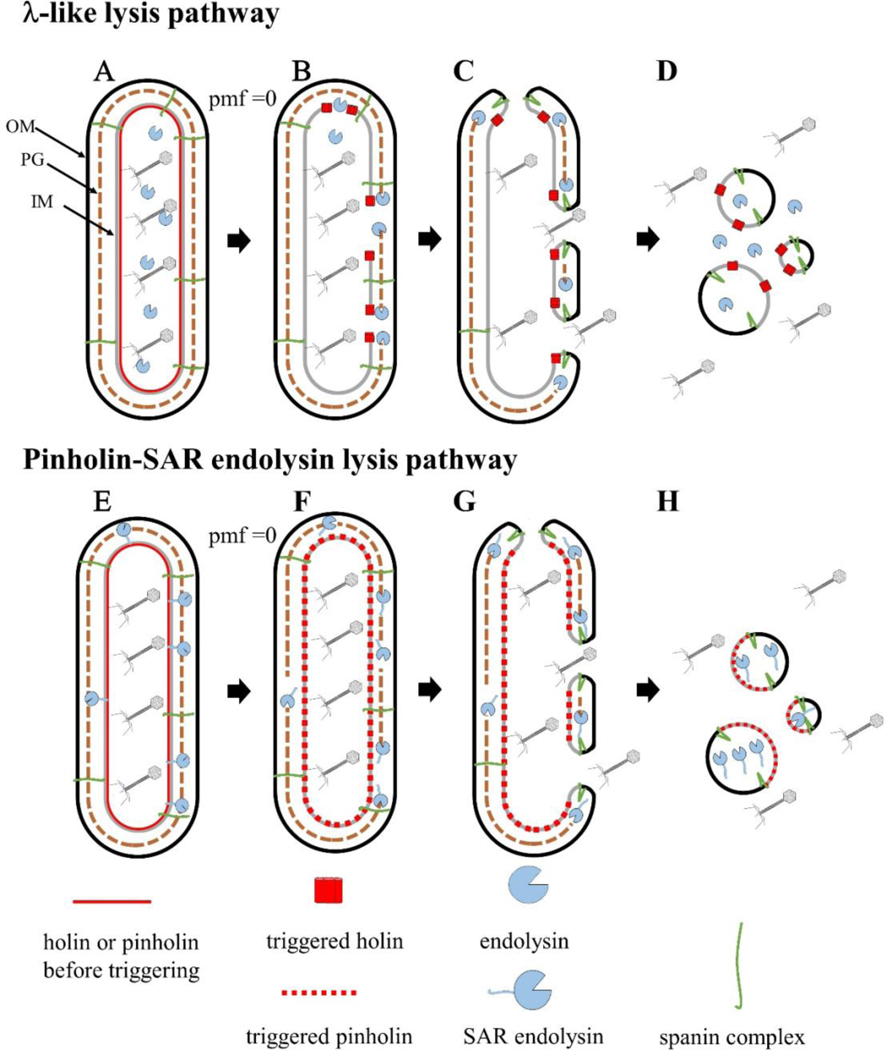Fig. 1.

Cartoon model of the two pathways of phage lysis of Gram-negative hosts. During the late morphogenesis period, the endolysin or SAR endolysin accumulates in the cytoplasm (A) or inner membrane (E), respectively. Upon reaching a critical concentration, holin triggering results in micron-scale holes (B) or small heptameric pinholes (F), which release the endolysin into the periplasm (B), or release the SAR end- olysin from the inner membrane into the periplasm;peptidoglycan degradation occurs at this step for both pathways. PG degradation results in spanin activation, which removes the topological barrier of the outer membrane by fusing both membranes (C and G). This results in the release of phage progeny and cytoplasmic content (D and H).
